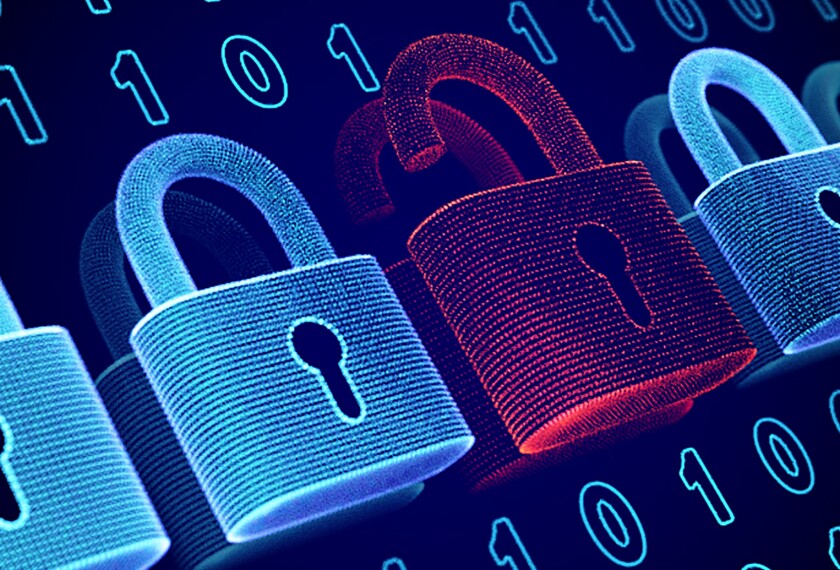The nation’s second-largest school district was hit over Labor Day weekend by a massive cyberattack that shut off access to email, crippled the district’s website, and hobbled systems teachers use to share lessons and take attendance.
Officials in the Los Angeles Unified school district did not detail the origins of the attack, except to say that they believe the attack was “criminal in nature.”
If that proves to be the case, Los Angeles Unified may be the most high-profile district yet to join the ballooning ranks of school systems targeted by cybercriminals, many of whom work in countries that are out of reach for U.S. law enforcement, such as Russia and China.
These groups often steal student or staff data, or lock down systems, demanding ransom payments in the millions of dollars in exchange for releasing the data back to the school systems. (LAUSD has not released information suggesting that’s what happened in this incident.)
If LAUSD can fall victim to one of these attacks, any district can, said Doug Levin, the national director of the K12 Security Information Exchange (K12 SIX) and one of the top experts in the country about cybersecurity for K-12 schools.
“Anyone can be a victim,” Levin said. “Even school districts as large as LAUSD are challenged to be able to defend themselves against these risks.”
K-12 systems—which now use technology across the board for teaching and learning and the management of schools—need support from states and the federal government to better protect themselves, particularly as cybercriminals become increasingly sophisticated, he added.
It’s ‘cyberattack season’ for schools
The beginning of the school year is a particularly vulnerable time for districts, Levin added, noting that some of the most prominent hacks on big school districts—such as Nevada’s Clark County and Virginia’s Fairfax County—hit right as the school year started.
That may be because the early weeks of school are “among the most challenging times of the year for school IT leaders,” he said. “One could imagine that that they were just overwhelmed, and so they could miss something that would otherwise throw up a red flag.”
LAUSD—which started its academic year in mid-August—did not cancel classes on Sept. 6, the first school day after the attack was discovered. It assured the community that key functions, including health care, payroll, and safety and emergency systems were unaffected by the hack, at least according to the district’s preliminary review.
Other systems, like the one used to take attendance, would need to be modified, at least temporarily.
It may be a good indicator of LAUSD’s level of preparedness that the district didn’t experience a complete shutdown, Levin said. “That suggests that they had been taking some steps to protect themselves and mitigate an attack like this,” he speculated.
“We are working collaboratively with our partners to address any and all impacted services,” the district wrote in a statement explaining the attack. “Los Angeles Unified is committed to delivering high-quality instructional programming, and we are benefiting from an immediate and comprehensive response from the federal government.”
After learning about the cyberattack, the White House brought together the U.S. Department of Education, the Federal Bureau of Investigation, and the Department of Homeland Security’s cybersecurity and infrastructure security agency “to provide rapid, incident response” for the district, alongside local law enforcement, the LAUSD statement said.
It’s curious that the White House would become involved so quickly in a single district cyberattack, Levin said, given that if the hub of the executive branch responded to every criminal hack, it likely wouldn’t do much else.
But that aggressive response could be due to more recent concerns that the federal government is not doing enough to protect schools. The Department of Education was called out last year by the Government Accountability Office for its lack of action on K-12 cybersecurity.
Cybersecurity is everyone’s problem
There are many other unanswered questions at this point, Levin said. How did the hackers get in? Did they access student or staff data? Are they demanding a ransom? What will the overall cost of restoring district systems be and how long will it take?
Cyberattacks of this magnitude can be costly, even if the district doesn’t end up paying an exorbitant ransom. For instance, the roughly 111,000-student Baltimore County school district in Maryland spent nearly $10 million recovering from a 2020 attack. That district has less than a quarter of the enrollment of LAUSD’s 520,000 K-12 students.
When it comes to the question of whether personal data was compromised, Levin suggested LAUSD might be well-advised to counsel parents, staff, and students that they should simply assume that their data was impacted, even if there’s no immediate evidence of that. That way, potential victims can begin monitoring their credit card accounts, start updating passwords, and take other steps to protect themselves.
Education technology leaders have long been wary of the debilitating impact of cyberattacks, with members of the Consortium for School Networking naming it as their number one concern five years in a row, according to an annual survey.
But district leaders often see it as the tech department’s purview, and not their own.
The incident in Los Angeles “should serve as a wake-up call to superintendents, school board members, and education policy leaders that schools now rely on technology to an extent that cybersecurity must be a priority not just for the IT department but for superintendents and school board members,” Levin said.
Some places to start, according to the experts?
- Do a risk assessment to figure out where your vulnerabilities are;
- Have a well-crafted cybersecurity plan that the district practices regularly, just as with fire or active shooter drills;
- Train employees on common tactics hackers use;
- Back-up data;
- and put in place multi-factor authentication systems, which call for employees and students to confirm their identities using a cellphone, separate email, or other source.









